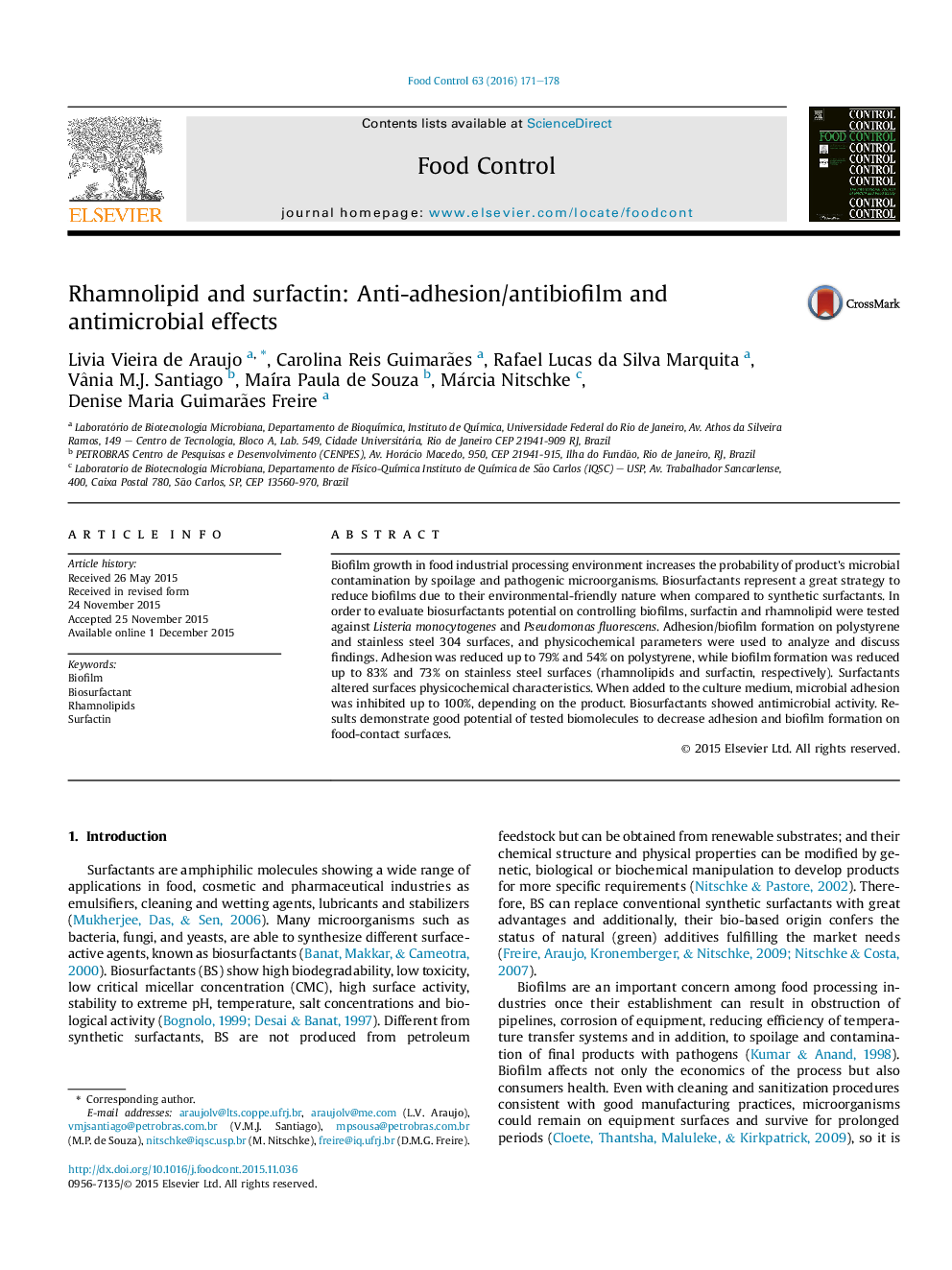| کد مقاله | کد نشریه | سال انتشار | مقاله انگلیسی | نسخه تمام متن |
|---|---|---|---|---|
| 4559149 | 1628399 | 2016 | 8 صفحه PDF | دانلود رایگان |

• Physicochemical properties of surfaces were altered using biosurfactants (BS).
• We describe the effect of biosurfactants on microbial adhesion/biofilm development.
• Biosurfactants were effective as antimicrobial, antiadhesion and antibiofilm agents.
• Relationship between BS, adhesion/biofilm and surfaces physicochemical properties.
Biofilm growth in food industrial processing environment increases the probability of product's microbial contamination by spoilage and pathogenic microorganisms. Biosurfactants represent a great strategy to reduce biofilms due to their environmental-friendly nature when compared to synthetic surfactants. In order to evaluate biosurfactants potential on controlling biofilms, surfactin and rhamnolipid were tested against Listeria monocytogenes and Pseudomonas fluorescens. Adhesion/biofilm formation on polystyrene and stainless steel 304 surfaces, and physicochemical parameters were used to analyze and discuss findings. Adhesion was reduced up to 79% and 54% on polystyrene, while biofilm formation was reduced up to 83% and 73% on stainless steel surfaces (rhamnolipids and surfactin, respectively). Surfactants altered surfaces physicochemical characteristics. When added to the culture medium, microbial adhesion was inhibited up to 100%, depending on the product. Biosurfactants showed antimicrobial activity. Results demonstrate good potential of tested biomolecules to decrease adhesion and biofilm formation on food-contact surfaces.
Journal: Food Control - Volume 63, May 2016, Pages 171–178